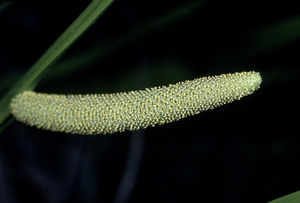Difference between revisions of "Acorus"
Jump to navigation
Jump to search
m (1 revision: Acorus) |
(rm everything except taxobox, add ack) |
||
| Line 1: | Line 1: | ||
| − | |||
{{italic title}} | {{italic title}} | ||
{{Automatic taxobox | {{Automatic taxobox | ||
| Line 11: | Line 10: | ||
| synonyms=''Calamus'' <small>Garsault</small> | | synonyms=''Calamus'' <small>Garsault</small> | ||
}} | }} | ||
| − | |||
| − | |||
| − | |||
| − | |||
| − | |||
| − | |||
| − | |||
| − | |||
| − | |||
| − | |||
| − | |||
| − | |||
| − | |||
| − | |||
| − | |||
| − | |||
| − | |||
| − | |||
| − | |||
| − | |||
| − | |||
| − | |||
| − | |||
| − | |||
| − | |||
| − | |||
| − | |||
| − | |||
| − | |||
| − | |||
| − | |||
| − | |||
| − | |||
| − | |||
| − | |||
| − | |||
| − | |||
| − | |||
| − | |||
| − | |||
| − | |||
| − | |||
| − | |||
| − | |||
==References== | ==References== | ||
{{Reflist|30em}} | {{Reflist|30em}} | ||
| − | + | {{Ack-Wikipedia}} | |
| − | {{ | ||
| − | |||
| − | |||
| − | |||
| − | |||
| − | |||
| − | |||
| − | |||
| − | |||
| − | |||
| − | |||
| − | |||
| − | |||
| − | |||
| − | |||
| − | |||
| − | |||
| − | |||
| − | |||
[[Category:Monocots]] | [[Category:Monocots]] | ||
| − | |||
| − | |||
| − | |||
| − | |||
Revision as of 17:57, 4 June 2017
| Acorus | |
|---|---|

| |
| Sweet flag Acorus calamus - spadix | |
| Scientific classification | |
| Kingdom: | Plantae |
| Clade: | Angiosperms |
| Clade: | Monocots |
| Order: | Acorales Reveal[1] |
| Family: | Acoraceae Martinov[1] |
| Genus: | Acorus L. |
| Synonyms[2] | |
|
Calamus Garsault | |
References
- ↑ 1.0 1.1 Reveal, James L. (17 February 2011). "Indices Nominum Supragenericorum Plantarum Vascularium – S, Solanales". Indices Nominum Supragenericorum Plantarum Vascularium Alphabetical Listing by Genera of Validly Published Suprageneric Names. University of Maryland and Cornell University.
- ↑ Kew World Checklist of Selected Plant Families
Acknowledgements
This article uses material from the Wikipedia article Acorus, which is released under the Creative Commons Attribution-Share-Alike License 3.0.